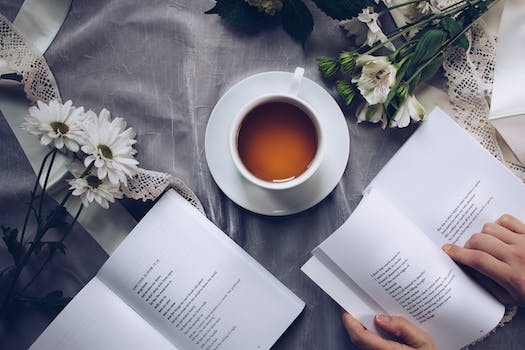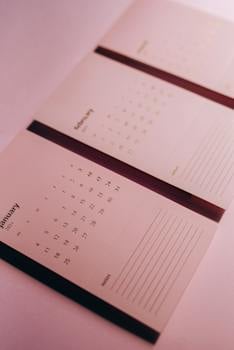

-
Table of Contents
Unlock the beauty and depth of poetry with A Guide to Reading Poetry.
Introduction
A Guide to Reading Poetry is a comprehensive resource that aims to enhance readers' understanding and appreciation of poetry. This guide provides valuable insights into the various elements and techniques used in poetry, helping readers navigate the complexities of poetic language and imagery. Whether you are a beginner or a seasoned poetry enthusiast, this guide offers practical tips and strategies to unlock the deeper meanings and emotions embedded within poems. By exploring different poetic forms, analyzing poetic devices, and delving into the historical and cultural contexts of poetry, this guide equips readers with the tools necessary to engage with and interpret poetry effectively.
The Importance of Understanding Poetic Devices in Reading Poetry
Poetry is a unique form of literature that often requires a different approach when it comes to reading and understanding. Unlike prose, which follows a more straightforward narrative structure, poetry is characterized by its use of language, rhythm, and imagery to convey meaning. To fully appreciate and interpret a poem, it is essential to have a solid understanding of the various poetic devices that poets employ.
One of the most fundamental poetic devices is rhyme. Rhyme occurs when words have similar sounds, typically at the end of lines. It adds a musical quality to the poem and can help create a sense of unity and coherence. For example, in Robert Frost's famous poem "Stopping by Woods on a Snowy Evening," the repeated rhyme scheme of AABA in each stanza contributes to the poem's overall musicality.
Another important device is meter, which refers to the rhythmic pattern of stressed and unstressed syllables in a line of poetry. Meter helps establish the poem's pace and can evoke different emotions depending on its variation. For instance, a poem with a regular iambic pentameter, like Shakespeare's sonnets, creates a steady and sonorous rhythm that enhances the emotional impact of the words.
Imagery is yet another crucial element in poetry. It involves the use of vivid and descriptive language to create mental pictures and appeal to the reader's senses. By employing imagery, poets can evoke emotions and convey complex ideas in a concise and powerful manner. In Sylvia Plath's poem "Mirror," the use of visual imagery, such as "a lake" and "a terrible fish," helps to convey the speaker's self-reflection and the harsh reality of aging.
Metaphor and simile are two additional poetic devices that poets often employ to create connections and deepen meaning. Metaphor involves comparing two unrelated things, while simile uses "like" or "as" to make a comparison. Both devices can add depth and layers of interpretation to a poem. In Langston Hughes' poem "Harlem," the line "Does it dry up like a raisin in the sun?" uses a simile to convey the idea of deferred dreams and the potential consequences of unfulfilled aspirations.
Understanding these poetic devices is crucial because they contribute to the overall meaning and impact of a poem. By recognizing and analyzing rhyme, meter, imagery, metaphor, and simile, readers can delve deeper into a poem's themes, emotions, and messages. Moreover, these devices often work together to create a cohesive and harmonious whole, enhancing the reader's experience and appreciation of the poem.
In conclusion, understanding poetic devices is essential for reading and interpreting poetry effectively. Rhyme, meter, imagery, metaphor, and simile are just a few of the many devices that poets use to convey meaning and evoke emotions. By recognizing and analyzing these devices, readers can gain a deeper understanding of a poem's themes and messages. So, the next time you encounter a poem, take the time to explore and appreciate the various poetic devices at play. You may find that the beauty and power of poetry lie in its ability to communicate complex ideas through the careful and deliberate use of language.
Analyzing Symbolism and Imagery in Poetry: A Beginner's Guide

Analyzing Symbolism and Imagery in Poetry: A Beginner's Guide
Poetry is a beautiful and intricate art form that has the power to evoke emotions and transport readers to different worlds. One of the key elements that make poetry so captivating is its use of symbolism and imagery. Symbolism and imagery are powerful tools that poets use to convey deeper meanings and create vivid mental images in the minds of their readers. In this beginner's guide, we will explore the importance of analyzing symbolism and imagery in poetry.
Symbolism is the use of symbols to represent ideas or qualities. In poetry, symbols can be objects, actions, or even words that carry a deeper meaning beyond their literal interpretation. For example, a rose can symbolize love or beauty, while a storm can symbolize chaos or turmoil. By using symbols, poets can add layers of meaning to their work, allowing readers to engage with the poem on a deeper level.
When analyzing symbolism in poetry, it is important to consider the context in which the symbol is used. The same symbol can have different meanings in different poems or even within the same poem. For instance, a snake can symbolize both evil and wisdom, depending on the poet's intention. By examining the surrounding words and phrases, readers can gain a better understanding of the symbol's intended meaning.
Imagery, on the other hand, refers to the use of vivid and descriptive language to create mental pictures in the reader's mind. Poets often use sensory details such as sight, sound, taste, touch, and smell to bring their words to life. By appealing to the reader's senses, poets can create a more immersive and engaging experience.
Analyzing imagery in poetry involves paying close attention to the specific words and phrases used by the poet. Look for words that evoke strong emotions or create vivid mental images. For example, words like "crimson," "whisper," or "velvet" can paint a picture in the reader's mind and evoke specific feelings. By examining the imagery used in a poem, readers can gain insight into the poet's intended message or mood.
It is also important to consider the overall theme or message of the poem when analyzing symbolism and imagery. Symbols and imagery are often used to reinforce or enhance the poem's central idea. By examining how the symbols and imagery contribute to the overall theme, readers can gain a deeper understanding of the poet's intentions.
Transitional phrases such as "in addition," "furthermore," or "on the other hand" can help guide readers through the analysis of symbolism and imagery in poetry. These phrases signal a shift in focus or introduce a new point, ensuring that the content flows smoothly from one idea to the next.
In conclusion, analyzing symbolism and imagery in poetry is a crucial step in understanding and appreciating the deeper meanings behind a poem. By examining the symbols and imagery used by the poet, readers can gain insight into the poem's themes, emotions, and messages. So, the next time you read a poem, take a moment to delve into its symbolism and imagery, and let the words transport you to a world of deeper understanding and appreciation.
Exploring Different Poetic Forms and Structures in Reading Poetry
Poetry is a beautiful and intricate form of literature that has been captivating readers for centuries. It is a unique art form that allows writers to express their thoughts, emotions, and experiences in a condensed and often metaphorical manner. To fully appreciate and understand poetry, it is essential to explore the different poetic forms and structures that exist. This guide will take you on a journey through some of the most common and fascinating forms of poetry, helping you to develop a deeper appreciation for this art form.
One of the most well-known forms of poetry is the sonnet. Sonnets originated in Italy in the 13th century and have since become a popular form of expression for poets around the world. Sonnets typically consist of 14 lines and follow a specific rhyme scheme. The most famous type of sonnet is the Shakespearean sonnet, which is composed of three quatrains and a final couplet. This form allows poets to explore a particular theme or idea in a structured and concise manner.
Another form of poetry that is worth exploring is the haiku. Haiku is a traditional form of Japanese poetry that consists of three lines and follows a 5-7-5 syllable pattern. Haikus often capture a single moment in nature and evoke a sense of tranquility and reflection. The brevity of the haiku forces poets to carefully choose their words and create vivid imagery within a limited space.
If you are looking for a more experimental and unconventional form of poetry, you might enjoy reading prose poetry. Prose poetry blurs the line between prose and poetry, combining the narrative elements of prose with the lyrical qualities of poetry. Unlike traditional poetry, prose poetry does not follow a specific rhyme scheme or meter. Instead, it allows poets to freely explore their thoughts and emotions in a more fluid and unrestricted manner.
For those who enjoy a challenge, the villanelle is a poetic form that requires careful attention to structure and repetition. Villanelles consist of 19 lines and follow a specific rhyme scheme. The first and third lines of the first stanza are repeated throughout the poem, creating a sense of rhythm and musicality. This form allows poets to explore complex themes and emotions while adhering to a strict structure.
Lastly, the ode is a form of poetry that celebrates and praises a particular person, object, or idea. Odes are often characterized by their elevated and formal language, as well as their passionate and enthusiastic tone. Odes can be written in various lengths and structures, allowing poets to express their admiration and reverence in a way that is both powerful and captivating.
Exploring different poetic forms and structures in reading poetry can be a rewarding and enriching experience. Each form offers its own unique set of challenges and opportunities for expression. By familiarizing yourself with these forms, you will develop a deeper understanding and appreciation for the art of poetry. So, the next time you pick up a book of poems, take a moment to consider the form and structure behind the words, and let yourself be transported into the beautiful world of poetry.
Q&A
1. What is "A Guide to Reading Poetry"?
"A Guide to Reading Poetry" is a book that provides guidance and insights on how to effectively read and understand poetry.
2. Who is the author of "A Guide to Reading Poetry"?
The author of "A Guide to Reading Poetry" is Mary Kinzie.
3. What is the purpose of "A Guide to Reading Poetry"?
The purpose of "A Guide to Reading Poetry" is to help readers develop the necessary skills and techniques to appreciate and analyze poetry more effectively.
Conclusion
In conclusion, "A Guide to Reading Poetry" provides valuable insights and techniques for understanding and appreciating poetry. It emphasizes the importance of engaging with the language, imagery, and emotions conveyed in poems, while also encouraging readers to explore different interpretations and perspectives. By offering practical advice and examples, this guide equips readers with the necessary tools to navigate the complexities of poetry and derive meaning from it. Whether one is a novice or an experienced reader, "A Guide to Reading Poetry" serves as a helpful resource in unlocking the beauty and depth of poetic works.











